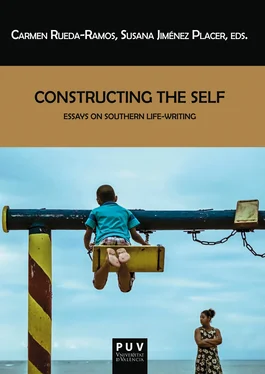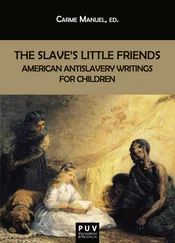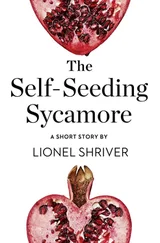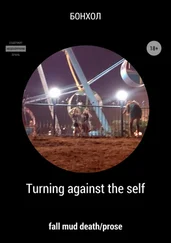an existing object, by recreating the maker, itself necessitates a new act of objectified projection: the human being, troubled by weight, creates a chair; the chair recreates him to be weightless; and now he projects this new weightless self into new objects, the image of an angel, the design for a flying machine. Second, just as the sentient needs are projected into objects, so objects themselves contain capacities and needs that sponsor additional artifacts. (321)
But if the artifact can be seen as a lever that recreates the maker, it might also be understood as a lever that has the potential for remaking those who purchase or use the artifact. And here, in the case of Washington and his desire to remake white southern attitudes toward blacks, is the artifact’s revolutionary potential: in the act of labor and making, blacks in effect turn themselves inside out, projecting the richness of their interior lives into the artifact. That richness is levered not only back into the black makers, remaking them in the process, but also outward into the world, including the world of white southern culture. It was the richness and humanity of the black makers that were embedded in the artifact—that is, their interior life rather than their black skin—that Washington wanted white southerners to recognize and acknowledge. Recognition by whites of the humanity embedded in artifacts—and thus in their makers—would begin a process transforming racial attitudes and leading to the creation of a more just and equitable society.
Washington’s understanding of the revolutionary potential of the artifact dovetails with his understanding of industrial education, as it too is best understood as a lever, as a tool for immediately improving blacks and eventually improving whites, as they come together to remake the South. “Our school is a lever which has made of several hundred young men and women levers in their turn to lift up their race,” Washington observes ( Black-Belt Diamonds 13), acknowledging the first step in his vision—and version—of southern reconstruction. The second step would come later, over time. While Washington certainly misjudged white recalcitrance in acknowledging the humanity of blacks—or maybe he knew all along but didn’t want to let on publicly—he nonetheless constructed through his autobiographical writing a far-reaching and visionary plan for educating both blacks and whites for the remaking of the South into a better place for all its citizens.
And this returns us to Benjamin Franklin, who believed that to make the world a better place future people needed to be first and foremost toolmakers. Certainly both Franklin and Washington were just that, conceiving their autobiographies as tools for improving the lives of their readers. Franklin went so far as to configure himself metaphorically as a book that he, as a printer, could go back and edit, correcting what he called the errata of his life, in an endless process of self-improvement. When he was a young man, Franklin composed an epitaph for himself that drew upon the same metaphorical construction:
The Body of
B. Franklin, Printer;
Like the Cover of an Old Book,
Its Contents torn out,
And stript of its Lettering and Gilding,
Lies here, Food for Worms.
But the work shall not be wholly lost:
For it will, as he believ’d, appear once more,
In a new & more perfect Edition
Corrected and amended
By the Author.
Booker T. Washington, as far as I know, never described himself as a correctible book. But in a sense that is what he strived to present himself in his autobiographies, rewriting his life over and over again, honing and sharpening his narrative, making it into what he hoped would be the most effective tool for opening the way for social change and social justice in the South.
Works Cited
Bieze, Michael. Booker T. Washington and the Art of Self-Representation . New York: Peter Lang, 2008. Print.
---. “Ruskin in the Black Belt: Booker T. Washington, Arts and Crafts, and the New Negro.” Source: Notes in the History of Art 24.4 (2005): 24-34. Print.
Dixon, Thomas, Jr. The Leopard’s Spots . New York: Doubleday, Page, 1902. Print.
Du Bois, W. E. B. The Souls of Black Folk. 1903. New York: Oxford UP, 2007. Print.
Franklin, Benjamin. The Autobiography. 1791. The Autobiography and Other Writings . Ed. L. Jesse Lemisch. New York: Penguin Signet Classics, 2001. Print.
---. “Benjamin Franklin’s Epitaph.” Bible.org . 2 February 2009. Web. 20 January 2017. < https://bible.org/illustration/benjaminfranklin%E2%80%99sepitaph>
Gill, Eric. Autobiography . 1941. New York: Biblo and Tannen, 1968. Print.
Hale, Grace Elizabeth. Making Whiteness: The Culture of Segregation in the South, 1890-1940 . New York: Random House, 1998. Print.
Harlan, Louis R. “Introduction.” Up From Slavery . By Booker T. Washington. 1901. New York: Penguin Books, 1987. vii-xliii. Print.
---. “ Up From Slavery as History and Biography.” Booker T. Washington and Black Progress: Up From Slavery 100 Years Later . Ed. W. Fitzhugh Brundage. Gainesville: UP of Florida, 2003. 19-37. Print.
Leverenz, David. “Booker T. Washington’s Strategies of Manliness, for Black and White Audiences.” Booker T. Washington and Black Progress: Up From Slavery 100 Years Later . Ed. W. Fitzhugh Brundage. Gainesville: UP of Florida, 2003. 165-187. Print.
Norrell, Robert J. “Understanding the Wizard: Another Look at the Age of Booker T. Washington.” Booker T. Washington and Black Progress: Up From Slavery 100 Years Later . Ed. W. Fitzhugh Brundage. Gainesville: UP of Florida, 2003. 38-57. Print.
Olney, James. “The Founding Fathers—Frederick Douglass and Booker T. Washington.” Slavery and the Literary Imagination: Selected Papers from the English Institute, 1987 . Ed. Deborah McDowell and Arnold Rampersand. Baltimore: Johns Hopkins UP, 1989. 1-24. Print.
Scarry, Elaine. The Body in Pain: The Making and Unmaking of the World . New York: Oxford UP, 1985. Print.
Washington, Booker T. Black-Belt Diamonds: Gems from the Speeches, Addresses, and Talks to Students . Ed. Victoria Earle Matthews. New York: Fortune and Scott, 1898. Print.
---. Up From Slavery . 1901. New York: Penguin Books, 1987. Print.
---. Working with the Hands . 1904. New York: Negro Universities P, 1969. Print.
PART 2
THE LEGACY OF RACE:RECONCILING SELVES
“I Knew Then Who I Was”: Memory, Narrative, and Sense of Self in Autobiographies of the Jim Crow South
Jennifer Ritterhouse George Mason University
In Uplifting the Race: Black Leadership, Politics, and Culture in the Twentieth Century , historian Kevin Gaines observes that “a theme common to much African American autobiographical writing is the telling of the moment, usually during childhood, at which the author learns the drama of ‘social equality,’ or, as James Weldon Johnson put it, ‘the brutal impact of race and . . . how race prejudice permeate[s] the whole American social organism’” (47). Highly self-conscious, conventional, literary, sometimes lyric, black autobiographers’ dramas of “social equality” recount, in Gaines’s words, “the painful socialization of young African American males and females into a negrophobic, Victorian social order” (47), and they are inevitably shaped by the authors’ mature political views. In fact, scholars have been so aware of the extent to which black autobiography is shaped by its authors’ mature political views that they have often questioned the truthfulness of autobiographical narratives. The best-known case is Richard Wright’s Black Boy , which, as biographer Michel Fabre has shown, includes a number of fictional elements.
Читать дальше












